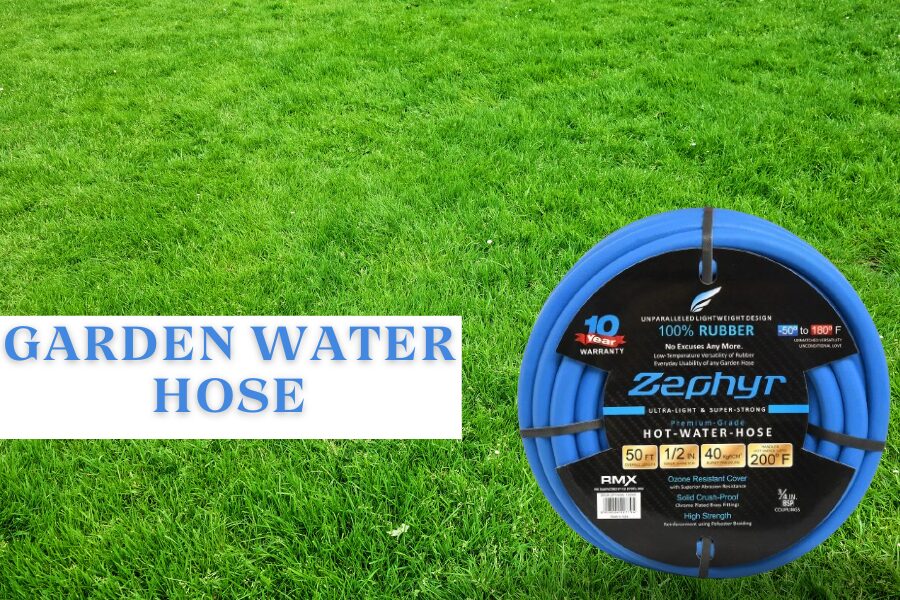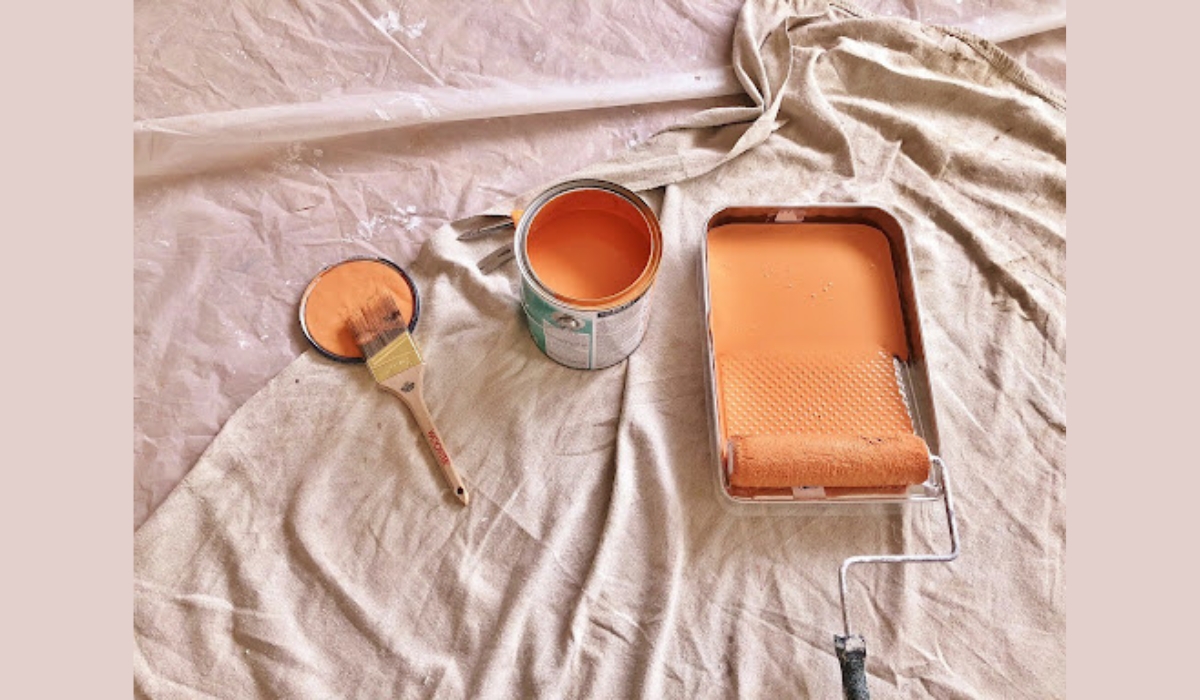Home Improvement
Five Signs You Need to Replace Your Garden Water Hose

Many people adore gardening as a hobby because it offers a calming effect and an opportunity to support the world around us. A garden water hose is a necessary piece of equipment for any gardener. But like any tool, its duration of use is limited. It can save you time, work, and even water to know when you should replace your garden hose. Here are five visible signs that your garden needs a new hose to keep flourishing.
Permanent Leaks and Patches
A leaking garden hose can be a gardener’s greatest nightmare. Little leaks might be easily fixed with a fast repair, but multiple or chronic leaks are a sign that the hose’s substance has degraded. Despite their resilience, rubber garden hoses can nevertheless get worn out. They may get microscopic holes or cracks over time, and the worse they get from us.
It’s obvious that your hose needs to be replaced if you see yourself searching for repair kits or adhesive tape on a regular basis. This indicates that your hose’s quality is being compromised. Investing in a new hose helps increase gardening task efficiency while also conserving water.
Drop in Water Pressure
Decreased water pressure is another obvious indicator that a garden hose is malfunctioning. If water trickles out of the tap instead of flowing, your hose may be the source of the issue rather than your water supply.
Water flow may be restricted by kinked, twisted, or debris-filled hoses. Internal obstructions that are challenging to remove can occur in even the most premium garden hoses over time. It’s time to think about getting a new hose when the old one begins to fail rather than assist. For future peace of mind, go with a hose that won’t kink.
Evident Wear and Tear
Check for noticeable damage on a regular basis with your lawn hose. Common problems like cuts, cracks, or abrasions can get worse overtime, especially when the hose is being pulled over uneven ground or left outside in the rain or snow. The hose material might become brittle and more prone to cracking due to UV light degradation caused by the sun.
It’s advisable to change the hose if you observe noticeable wear and tear rather than risk having it break altogether and leave you without water during important periods. A premium-quality rubber garden hose will last longer and be more resistant to environmental damage.
Growth of Mold and Mildew
The presence of mold and mildew is a less evident but no less significant indication that the garden’s water hose needs to be replaced. Some of the fungus that may be found inside the hose include the ones that may develop when water is stored for long in the hose. Besides, they produce awful smells, which can harm your plants and are also dangerous to your health.
To prevent this, it could be advised that the hose be drained each time after it has been used and then be kept in a cool dry place. Some of the problems associated with a mold and mildew presence include that once they are formed it may be extremely hard to eliminate them. The most effective action to take in these circumstances to ensure that the water you are using is safe and clean is to replace the hose.
Challenges in Handling
Garden hoses may stiffen and become challenging to handle over time, particularly if they were previously subjected to severe weather or other adverse circumstances. When a hose resists coiling and uncoils, it might become a heavy and difficult-to-handle instrument.
This rigidity might result in kinks and cracks in addition to making watering your lawn more challenging. It’s time to think about getting a replacement when using your hose starts to become strenuous. To add additional enjoyment to your gardening chores, look for the best garden hoses that are flexible and easy to use.
Selecting the Ideal Garden Hose
When the time comes to replace your garden water hose, consider over what features are most important to you. Do you need a hose that will endure constant dragging or a hose that can be stored and folded without much hassle? For frequent usage in a variety of weather conditions, Zephyr’s rubber garden hoses are a great option because of their exceptional flexibility and durability.
Furthermore, take into account hoses with strengthened materials and kink-resistant technology for longer lifespans. Keeping a healthy, flourishing garden can be greatly aided by investing in a top-notch garden hose.
To sum up
Your brand-new garden hose can last for many years if you put some thought into it and make the appropriate selection. Always remember that a happy garden leads to a happy you, and a happy hose signifies both! The premium Zephyr Water Hoses will allow you to water your garden with ease and put an end to the drama of a leaky, kinked hose. Do not forget that a high-quality garden hose is a wise investment in your garden’s aesthetic appeal and well-being.
Home Improvement
How to Budget for Major Home Improvement Projects

Home improvement projects can be both exciting and overwhelming. Whether you’re renovating a kitchen, adding a new room, or undertaking a major exterior overhaul, the scope of these projects can be vast and complex. One of the most critical aspects of managing a successful home improvement project is budgeting. A well-planned budget not only helps you manage your finances effectively but also ensures that you complete the project without unexpected financial strain. In this guide, we’ll explore the steps and strategies necessary to budget effectively for major home improvement projects, so you can achieve your renovation goals without compromising your financial stability.
Define Your Project Scope and Goals
Before you can start budgeting, it’s essential to define the scope and goals of your project. Begin by clearly outlining what you want to achieve. Are you looking to modernize your kitchen with new appliances and countertops? Or perhaps you want to expand your living space with a new addition? The more specific you are about your project’s goals, the better you can estimate the costs involved.
Consider creating a detailed plan or blueprint of the project. This plan should include all the major components, such as materials, labor, and any additional features you want to incorporate. By having a clear understanding of what you want, you can create a more accurate budget and avoid unnecessary expenses.
Budgeting for Roof Improvements
When budgeting for roof improvements, it’s crucial to plan for both expected and unexpected costs. Start by getting estimates from several contractors to compare pricing and services. A local roofer can provide insights into regional material costs and potential issues specific to your area. Include expenses for materials, labor, and any necessary permits in your budget. Additionally, set aside a contingency fund to cover unforeseen problems, such as hidden damage or structural issues. By carefully planning and researching, you can manage your roofing project’s budget effectively and ensure that your home remains protected and aesthetically pleasing.
Research and Gather Cost Estimates
With a clear project scope in hand, the next step is to gather cost estimates. Research the materials, labor, and any other expenses associated with your project. Start by obtaining quotes from contractors, suppliers, and service providers. Online resources and home improvement forums can also provide valuable insights into current pricing trends and cost expectations.
When gathering estimates, make sure to get multiple quotes for each component of your project. This will help you compare prices and identify the best deals. Keep in mind that the lowest quote may not always be the best option. Consider the reputation and reliability of the service providers, as well as the quality of materials they use.
Create a Detailed Budget Breakdown
Once you have gathered cost estimates, it’s time to create a detailed budget breakdown. This involves categorizing all the expenses associated with your project and allocating funds accordingly. Your budget should include:
- Materials: This includes all the building materials, fixtures, and finishes required for the project.
- Labor: Estimate the cost of hiring contractors, electricians, plumbers, and any other professionals needed.
- Permits and Fees: Many home improvement projects require permits, which can come with associated fees.
- Contingency Fund: It’s wise to set aside a contingency fund for unexpected expenses that may arise during the project.
A detailed budget breakdown helps you visualize where your money is going and ensures that you allocate funds appropriately for each aspect of the project.
Factor in Additional Costs and Contingencies
In addition to the primary costs of materials and labor, there are often additional expenses that can arise during a home improvement project. These can include:
- Design and Planning Fees: If you hire an architect or designer, their fees should be factored into your budget.
- Temporary Accommodations: If your project involves significant disruption, you might need to budget for temporary housing.
- Cleanup and Disposal: Costs associated with debris removal and cleanup should also be considered.
To safeguard against unforeseen issues, allocate a contingency fund, typically around 10-20% of the total project cost. This buffer can help cover unexpected expenses and prevent budget overruns.
Set a Realistic Timeline and Payment Schedule
A realistic timeline and payment schedule are crucial components of a successful home improvement budget. Start by estimating the duration of each phase of the project, from planning and design to construction and finishing.
Establish a payment schedule that aligns with the project timeline and milestones. Many contractors require deposits or progress payments, so ensure that your budget accounts for these requirements. Clear communication with your contractor about payment terms and schedules can help avoid misunderstandings and financial strain.
Track and Monitor Your Expenses
Once your project is underway, it’s essential to track and monitor your expenses to stay within budget. Keep detailed records of all invoices, receipts, and payments. Regularly compare your actual expenses with your budgeted amounts to identify any discrepancies.
Consider using budgeting tools or apps to help manage and track your spending. These tools can provide real-time updates and help you stay on top of your financial goals. If you notice any potential budget overruns, address them promptly to prevent further financial strain.
Budgeting for major home improvement projects is a critical step in ensuring that your renovation goals are achieved without financial strain. By defining your project scope, gathering cost estimates, creating a detailed budget breakdown, and monitoring your expenses, you can manage your finances effectively and enjoy a successful renovation.
Remember that flexibility and adaptability are essential components of budgeting. Unexpected challenges may arise, but with careful planning and open communication, you can navigate these obstacles and achieve your home improvement goals.
With a well-structured budget and a clear understanding of your project’s financial requirements, you can transform your home into the space you’ve always envisioned, all while staying within your budgetary constraints.
Home Improvement
6 Best Tips for Maintaining Your Fireplaces Working in 2024

Imagine sitting by a warm, crackling fire on a cold night. A well-kept fireplace is the best way to relax. However, to keep that inviting glow going strong, regular upkeep is essential.
In 2024, taking care of your fireplace means more than just cleaning it once in a while. This blog will share six expert tips to ensure fireplaces Melbourne remains efficient, safe, and ready to provide warmth when you need it most.
1. Regular Cleaning and Inspection
To keep your fireplace working well in 2024, it’s crucial to clean and inspect it regularly. This involves removing ash and soot from the firebox and ensuring there are no obstructions.
Regular cleaning helps prevent build-up that could affect performance or pose a fire hazard. An inspection should include checking for any visible damage or wear. Ideally, you should clean your fireplace after each use and schedule a professional inspection once a year.
2. Ensure Proper Ventilation
Proper ventilation is essential for the safe and efficient operation of your fireplace. Make sure the vents and flues are clear of obstructions to allow smoke and gases to exit your home properly.
Poor ventilation can lead to dangerous smoke backdrafts or increased creosote build-up, which can be a fire hazard.
3. Use Quality Fuel
Using quality fuel is important for a clean and efficient burn. Whether you’re using wood, pellets, or gas, make sure the fuel is dry, clean, and appropriate for your fireplace.
Wet or dirty wood can create excess smoke and creosote, which can clog the chimney and reduce efficiency. For gas fireplaces, ensure you’re using the correct type of gas and that it’s properly connected.
Quality fuel not only improves performance but also extends the life of your fireplace and reduces maintenance needs.
4. Inspect and Maintain the Chimney
Regular inspection and maintenance of the chimney are vital for fireplace safety. The chimney should be checked for blockages, cracks, or damage that could impair its function.
Creosote build-up inside the chimney can increase the risk of a chimney fire, so it’s important to have it cleaned regularly. Schedule a professional chimney sweep at least once a year to ensure that the chimney is in good condition and free of hazards.
5. Addressing Cracks and Damage
Cracks in the firebox or surrounding masonry can allow heat to escape, leading to potential damage to your home or increased risk of fire. Inspect your fireplace regularly for any signs of damage and repair them as soon as possible.
For significant damage, it’s best to consult a professional who can assess and fix the issues. Timely repairs help maintain the integrity of your fireplace and ensure it remains safe and functional.
6. Install and Use Fireplace Screens
Fireplace screens prevent sparks and embers from escaping the firebox, which can reduce the risk of accidental fires or burns. They also keep pets and children safe from getting too close to the flames. Make sure the screen is properly fitted and made from a heat-resistant material. Regularly check the screen for any damage or wear and replace it if needed.
Ensure Safe and Efficient Fireplace Operation
Maintaining your fireplace with care and attention is crucial for ensuring its safe and efficient operation throughout the year. By following these tips, you can enjoy the warmth and comfort of your fireplace while minimizing risks.
Home Improvement
5 Best Tips When Finding a Professional Pest Manager

Getting rid of pests can be hard and stressful, and you need to act quickly and effectively to stop the problems from getting worse.
In 2024, it is important to find a skilled and reliable pest manager to keep your home free of pests and safe for you and your family. This blog will share five essential tips to help you find a Professional Pest Manager you can trust.
1. Read the Reviews
Before you hire a pest manager, look at what other people have said about them. Reviews can tell you a lot about how reliable they are, how good their service is, and how happy their customers are.
Check with past clients to see how well they dealt with pest issues, how professional they were, and if there were any problems. You can find useful information on sites like Yelp, Google Reviews, or even the testimonials section of their own website.
2. Set a Budget
Set a budget for pest control services that takes into account the type of pests you have and how bad the problem is. Prices can vary depending on the size of your property and the severity of the pest problem.
To compare prices and services, get quotes from more than one pest control company. When prices seem too low, you should be careful because there may be hidden costs or less thorough service.
3. Stay Local
There are benefits to hiring a local pest manager. Usually, they know more about the pests that live in the area and the things in the environment that can make pest problems worse.
Also, local managers can act quickly in emergencies and offer ongoing help if needed. You can look in local business directories, ask your neighbors for suggestions, or read ads in your area.
4. Communicate the Scope of Your Needs
Tell the pest manager exactly what you want and what problems you are having with pests. If you have seen pests, please describe where they are, what kind of pests, and any worries you have about the chemicals or methods used to get rid of them.
A good pest manager will listen to your concerns and explain their approach to solving the problem. They should also provide information on safety precautions for pets and family members.
5. Make Sure They Are Licensed
Ensure that the pest manager is licensed and certified to perform pest control services in your area. Licensing requirements vary by state or country and help ensure that the manager is trained in safe and effective pest control practices. Ask for proof of their license and inquire about their experience dealing with your specific pest issues.
Find the Best Professional Pest Manager
Finding the best professional pest manager ensures effective pest control tailored to your needs. By prioritizing these ideas, you safeguard your home from pests while ensuring safety and peace of mind. So, choose wisely to maintain a pest-free environment and protect your property.
-

 Tech5 months ago
Tech5 months agoExploring the Features of Innocams: The Future of Security
-

 Home Improvement3 months ago
Home Improvement3 months agoEco-Friendly Round Rug Options for Sustainable Living in NZ
-

 How-To Guides2 months ago
How-To Guides2 months agoComprehensive Guide to Cockwarming: Enhancing Intimacy and Connection
-

 Fashion3 months ago
Fashion3 months agoBlack Magic: The Elegance and Sophistication of Ultimate Homecoming Dresses in Black
-

 Apps and Games3 months ago
Apps and Games3 months agoDiscover Tickzoo: The Ultimate Platform for Video Content Lovers and Creators
-

 Business5 months ago
Business5 months agoUnlock Potential: Explore Pikruos Services
-

 Blog3 weeks ago
Blog3 weeks agoPossiblyethereal: Exploring the Ethereal Unveiling Abstract Ideas
-

 Entertainment4 months ago
Entertainment4 months agoDiving into the Audio-Visual Experience with AV Tub: Innovating Our World of Media
















